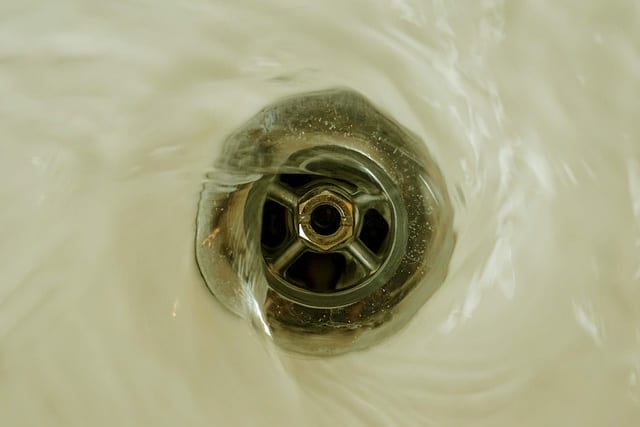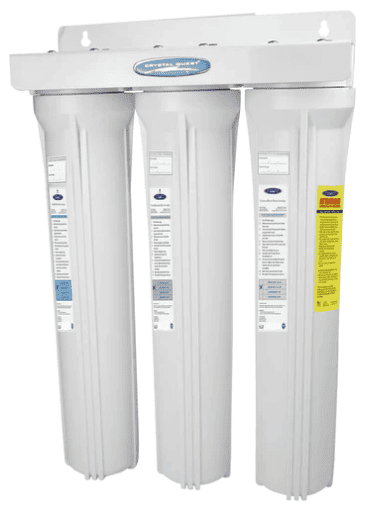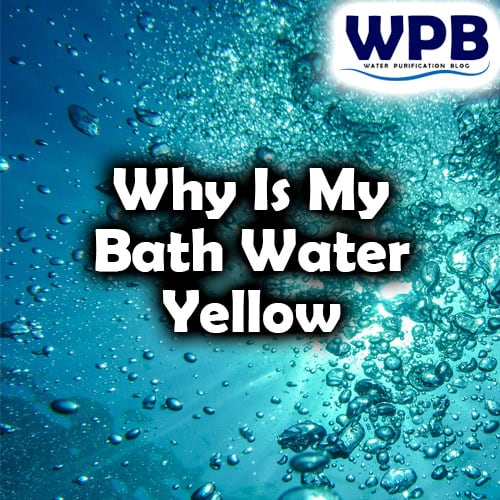What is the Reason of Yellow Bath Water? Unveiling the Mystery Behind Discolored Water
For the yellow color of your bath water, the most common suspect is iron. At quantities higher than 0,5 mg/l the iron starts making visual problems, like yellow water. Although iron in water is not being a health problem, it is not a nice sight, anyway.
Table of Contents
Introduction to Yellow Bath Water
Are you eagerly looking forward to a relaxing soak in your bath, only to be greeted by an unexpected sight—yellow water?
This article aims to demystify the phenomenon of yellow water, uncovering its underlying causes and offering practical solutions to restore your water to its pristine clarity.

So, let’s dive in and explore why your bath water might be turning yellow.
Why Is My Bath Water Yellow?
The sight of yellow water can undoubtedly be concerning, but fear not! There are several reasons why this discoloration might occur, ranging from harmless to potentially problematic. Let’s delve into some of the common causes below:
1. Iron and Manganese: the main problems causing yellow bath water
Minerals, such as iron and manganese, naturally occur in water sources. When these minerals exceed certain levels, they can impart a color tint to the water and make your bathwater yellow.
When iron in water is in quantities of over 0.5 mg/l, it will start to make visual problems, like brown stains or yellow bath water.
Iron can be removed completely from water by specialized iron removal filters, similar like water softeners, or a combination of whole house water filters.

Crystal Quest Mini Whole House Metal Removal Water Filter
Water flows through an iron, manganese, and hydrogen sulfide-reducing water filter cartridge.
In addition, the final filter cartridge also prevents bacteria growth.
- Specifically designed to remove metals.
- Available in single, double, and triple configurations.
- Options for 1″, 3/4″, and 1/2″ inlet/outlet.
- UV Water Sterilizer (Optional)
2. Rusty Pipes or Hot Water Heater: Could Aging Plumbing Be to Blame?
Over time, a rusty hot water tank, and aging pipes may corrode, leading to rust buildup.
If your home’s plumbing system includes iron or galvanized pipes, they can contribute to yellow water due to the presence of rust particles.
This issue often occurs in older houses with outdated plumbing infrastructure.
In this case a good whole house sediment filter can significantly fix the issue.
3. Sediment and Organic Matter: A Natural Explanation
Sometimes, yellow water is the result of sediments and organic matter present in the water supply. These particles can find their way into your bath water, causing it to appear discolored.
While this occurrence is generally harmless, it can still be visually unappealing.
4. Chemical Reactions: Unraveling the Color-Changing Puzzle
In some cases, the interaction between chlorine—commonly used as a disinfectant—and certain organic matter can cause a chemical reaction, resulting in yellow or discolored water.
This reaction typically occurs when chlorine reacts with decaying vegetation or algae in the water source.
This can be a bigger problem, as the chlorine in a combination with organic matter creates THMs.
5. Water Main Break: A Temporary Inconvenience
A water main break in your area can stir up sediment and disturb the normal flow of water, leading to yellow water temporarily.
This issue is usually resolved once the water main is repaired and the flow in the system stabilizes.
6. Municipal Water Treatment: A Potential Factor
Municipal water treatment processes involve the addition of chemicals to purify the water supply.
Occasionally, the interaction between these chemicals and natural minerals can cause a yellowish tint in the water. While safe to use, it might not be aesthetically pleasing.
How to Solve Yellow Water Problem in Your Home?
For any water purification process, the most important thing is to properly target the problem. This means that the first thing is to make a chemical and microbiological water analysis.
This will make absolutely clear what is the problem with your water. This is the most important part, so the right water purification method can be used.
Either high iron content, or high organic matter contents, these problems can be easily solved when correctly identified.
FAQs About Yellow Water
- FAQ: Can yellow water be harmful? Answer: Generally, yellow bath water is not harmful to your health. However, it’s essential to identify the cause to ensure there are no underlying issues.
- FAQ: How can I determine if the yellow color is due to minerals? Answer: Fill a clear glass with tap water and let it sit for a few minutes. If the water clears from the bottom up, minerals are likely the cause. In any case, if the discoloration persists, you should make a water analysis to be sure what is the reason foe yellow water.
- FAQ: Are there any DIY solutions to tackle yellow water? Answer: Yes, there are a few DIY solutions you can try to address yellow bath water. One option is to install a sediment filter on your main water line to trap particles before they reach your faucets. Additionally, regularly cleaning and flushing your plumbing fixtures can help remove mineral buildup and reduce discoloration. However, it’s always recommended to consult a professional if you’re unsure about the cause or if the issue persists.
- FAQ: Is it safe to bathe in yellow water? Answer: In most cases, bathing in yellow water is safe as long as the cause is not harmful. However, if you notice a foul odor, unusual taste, or other water quality issues, it’s best to refrain from using the water until the problem is resolved.
- FAQ: How can I prevent yellow water in the future? Answer: Regular maintenance of your plumbing system, including periodic pipe inspections and cleaning, can help prevent issues like rust buildup. Additionally, using a water softener or filtration system can minimize mineral content in your water, reducing the chances of discoloration.
- FAQ: Should you drink yellow water? Answer: It is better to drink bottled water until the yellow discoloration gets away.
Conclusion about Why Is My Bath Water Yellow
When you notice yellow water in your bath it can be a perplexing and disconcerting experience.
However, by understanding the common causes behind this discoloration, you can take appropriate measures to address the issue.
Whether it’s due to mineral buildup, rusted pipes, rusty water heater, sediment buildup, chemical reactions, or temporary water main breaks, there are various solutions available.
From installing water softeners and filtration systems to regular maintenance and cleaning, you can restore crystal-clear water to your bath and enjoy a truly refreshing experience.
Remember, while yellow bath water is generally harmless, it’s essential to identify the cause to ensure there are no underlying issues affecting your water quality.
If you’re uncertain or the problem persists, it’s advisable to seek professional assistance to assess and address the situation effectively.
If you notice yellow water, equip yourself with knowledge, apply practical solutions, and soon you’ll be luxuriating in water that’s as clear as a mountain stream.

Who am I?
I am working as a water treatment technical manager and I have more than 25 years of practical experience in water purification.
Water purification expert
After many years of experience in water purification, I want to share some of my knowledge and get people to know the real importance of water quality.
Water purification and water treatment are very complex themes, so it is important to explain them in an easy-to-read way.
On this blog, you will find many understandable, easy-to-read information about water purification.
I hope you enjoy it, find some useful information, and thank You for reading.
More info on my work and my expertise on water purification can be found on my LinkedIn profile.






